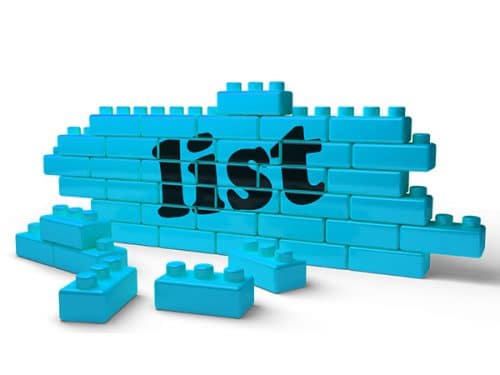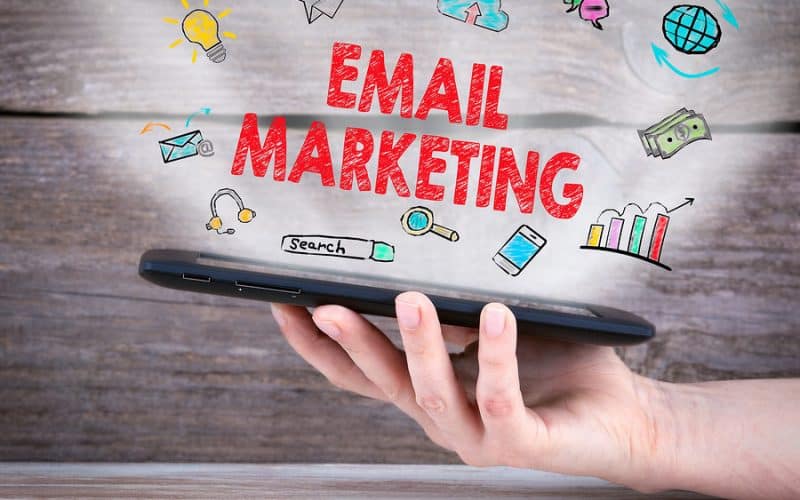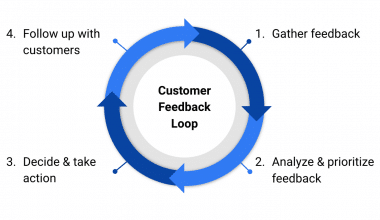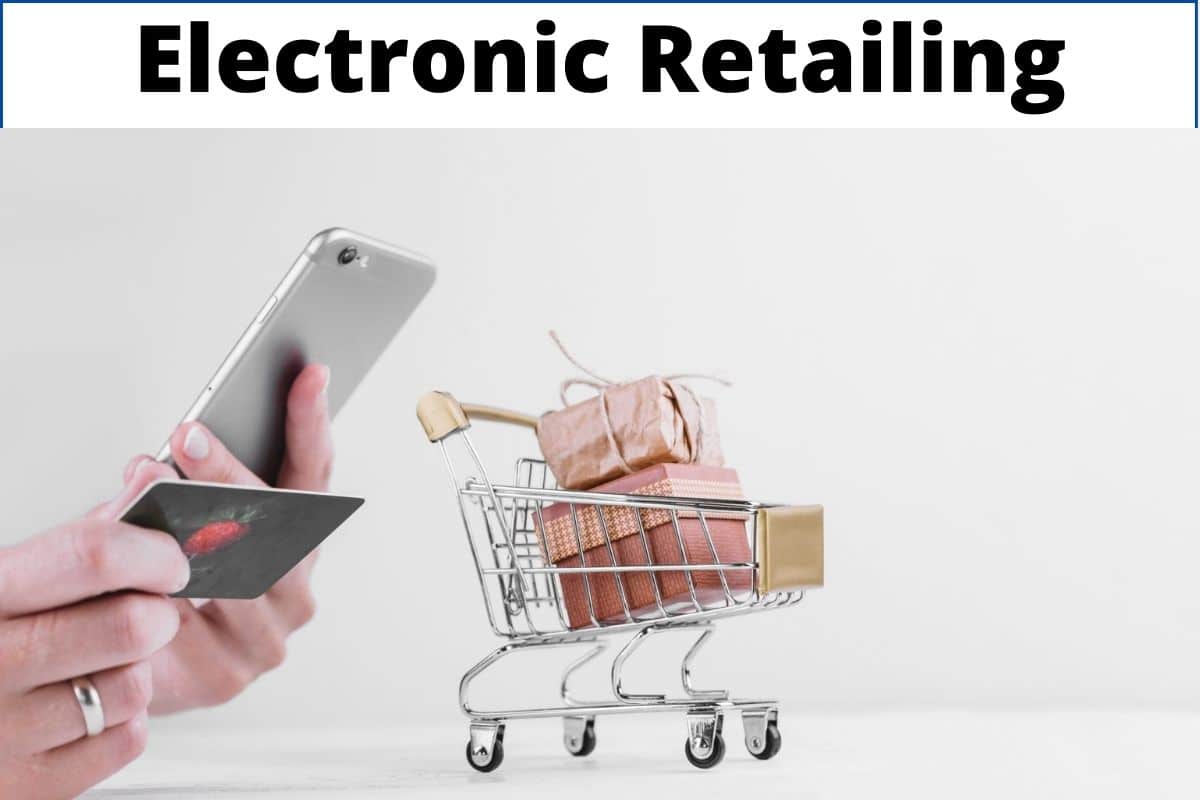When it comes to marketing your services, such as your regular coding classes, workshops, retreats, or other offerings, email marketing is by far the most efficient method. It’s a reality, and Instagram and Facebook are no match. Do not get me wrong, these two are really great tools for marketing. They, however, hardly cover the demands for effective conversions. Not with the constant change in algorithms, which limits the number of followers that get to see your updates. So to stay ahead of this, my friend, you must find out how to build an email marketing list from scratch for the purpose of sending out newsletters to your readers on a regular basis.
The good news is that by following this step-by-step approach on how to build a list, you’ll have an email marketing list up and running in no time, as well as some advanced knowledge that will help you stand out.
How to Build an Email Marketing List from Scratch in 10 Steps

Before now, a lot of folks have made building an email marketing list from scratch sound really tedious, making you doubt if this is even possible to achieve in 10 steps. Well, you’ll just have to wait to find out.
Let’s jump right in…
Step 1: Select an email marketing service provider
You’ll need to employ an email marketing company if you want to send emails to people who aren’t your best friend or sister. Don’t just email your coding students from your Gmail account. You’ll not only be breaking email marketing regulations (yes, there are some), but you’ll also have no way of growing your list because people won’t be able to sign up for it. The good news is that you can get started for free, so there’s really no reason not to!
While there are several options out there, my favorites are Mailchimp and ConvertKit. Mailchimp is free for up to 2,000 subscribers, which is ideal for those just getting started. But if you’re serious about building and developing your email marketing list from scratch (which you should be), ConvertKit is the way to go. This is because it presents you with so many options while maintaining simplicity. Their monthly costs start at $24 and they offer a 14-day free trial!
What you should look out for when selecting one
- A well-designed and simple-to-operate platform.
- Must have advanced tagging and segmentation capabilities. This means that when you send out a last-minute discount promo to everyone else, you should be able to, for example, omit folks who have already signed up. This is also quite simple to set up.
- Their customer support representatives should be very helpful. You could come up with non-existent problems just to give this a try
- Emails should be delivered consistently (which is something you’d anticipate but don’t always get).
Step Two: Set up your Email Marketing Account
Set up an account with your preferred email marketing platform. This part is pretty simple. Just get the URL of the platform and provide the pieces of information required of you.
However, you should ensure that every information provided are valid, else all of these would be for nothing.
Step 3: For your website, Create an Opt-in Form
After that, you want individuals to be able to subscribe to your mailing list via your website. Both Mailchimp and ConvertKit have forms that you can create and then add to your WordPress site.
But before you jump into that, take out time to describe in a few sentences what people can expect when they sign up on your form. Make it interesting and enjoyable. Whatever you do, ensure you avoid saying, “Sign up for my newsletter.”
Just get creative and play around phrases in your niche!!!
Consider how you can best assist your subscribers before you start sending out random notes or shouting out stuff you want to advertise to your subscribers.
You have a great opportunity—and even a responsibility—to deliver value to your subscribers. You owe this to anyone who says, “Hey, I like you enough to give you my email address.” So, do everything you can to ensure that they progress, keep informed, or are entertained.
So, how do you go about doing that?
#1. How frequently will you send it?
I believe that quantity is less significant than quality. Don’t force yourself to send something if you don’t have anything noteworthy to say or aren’t feeling inspired. Your subscribers will be aware of this! At the same time, if you go too long without sending an email, your readers may forget about you (who the hell is sending me this?). If you produce new content every week, such as coding videos, I think a weekly mail is fantastic; otherwise, once a month is perfect.
#2. What would you like to put in it?
It’s helpful to have some structure so your readers know what to expect. You may, for example, begin your email by sharing a personal tale or perspective. People are curious about what is going on in your life. Then you should offer something of value, such as an early-bird discount for your next course or a link to your latest coding video. Share items like your favorite podcast, recipes, or novels to add more value.
Finally, include a call to action in your conclusion. This leds to the last question
#3. What do you want your viewers to do after reading your article?
Do you want to sign up for your next workshop? Have you received any feedback on your most recent blog post? Would you like them to join your Facebook group?
Write as if you’re conversing with a friend. We instantly sense a connection with the writer when we read conversational content. We have the impression that we are getting to know him or her.
This should be your objective. But how do you go about doing it?
For the most part, conversational writing does not necessarily imply that you write as you speak (for me, this means wishy-washy words, grammar errors, and unfinished sentences…). Preferably, write your text to make it sound less like writing while injecting some personality.
Step 5: Write a greeting message
After they’ve signed up for your list and confirmed their subscription, your new subscribers will automatically receive your welcome message. First impressions are crucial in this situation. That is why your welcome message should be well-crafted.
You should express your gratitude to those who took the time to subscribe to your mailing list in your message. As a result, begin by saying “Thank You.” You might even give them a special gift, such as a discount while at your store or at your next workshop.
After that, let your new subscribers know what to expect from you now that they’ve joined your mailing list. Updates every week? Are there any invitations to upcoming workshops? New retreats: first dips? Are there any special offers? You want them to be enthralled by the prospect of joining our mailing list.
Finally, use a photo of yourself to personalize your message even more.
Read Also: Email Marketing Platforms: Overview, Common Features, Comparisons
Step 6: Create a freebie
It’s no doubt that people love Freebies. Dishing out unexpected gifts one of the quickest ways to form a bond with anyone. Now imagine a scenario where the gift or freebie you give to someone who joins your email list is completely awesome, beautiful, inspiring, or useful? There is an instantaneous feeling of affection and connection.
Here are a few examples of popular opt-in freebies:
- a handbook
- a quick reference guide
- a video demonstration
- a course delivered by email
- a promotional code
- a PDF manual
This, however, may not apply to every situation, so if you’re stumped and don’t know what kind of freebie will be best for your clients, consider asking the following question:
- What is the most pressing issue with my consumers?
- What is one present that might be able to assist them with… that?
It won’t be the complete solution — you should still encourage your subscribers to attend your classes or workshops for more help — but it could be a good start.
The trick is to select a topic and format that your readers are enthusiastic about, and for which they are willing to give you their email addresses.
Step 7: Design a landing page
Now that you’ve created an appealing freebie, you’ll want to spread the word about it and expose it to as many people as possible. It needs to go beyond your homepage. If it’s tucked away on your homepage, not everyone will notice it, and they’ll be distracted by everything else going on.
This is where a landing page comes into the picture. You introduce your freebie on your landing page, tell folks what they’ll get, and give them the option to sign up for it. There’s nothing else! You promote the link to this page as much as possible, including on your Instagram profile, Pinterest, and Facebook groups.
Step 8: Drive Traffic to Your Landing Page
Now that a landing page is in place, it’s time to SHARE IT!
You can promote your freebie in a variety of ways, but here are a few of my favorites:
- Posts on social media
- In your bios on social media
- In a recent blog post,
- On your website, in the sidebar
- Groups on Facebook
- Your readers hang out in forums and other places.
- On other websites as a guest writer
You could also set aside a budget for paid advertising.
The worst thing you can do is spend days creating the freebie only to spend too little time promoting it!
So depending on where your target market spend time more, you could give Facebook, Twitter, Instagram, Google and Linkedin ads a shot.
Step 9: Develop a Content strategy
Consistency requires having a plan. Begin by brainstorming ideas and researching forthcoming events that you wish to promote. Then, schedule your newsletters for the next 2-3 months so you’ll be aware of any upcoming events, updates, or promotions you would need to add in your emails.
This technique will prevent any last-minute disasters, and you will be able to create your email newsletters in a more comfortable manner, as well as avoid sending random, unstructured emails.
Step Ten: Test Run!
It’s critical to spend time properly testing each email before sending it out. Check all of the links and read it at least twice.
The next step is to try out several solutions to increase your performance, such as:
On which day of the week do you see the most open rates?
What are the most effective subject lines?
Should the “From” field have a different name?
The secret of effective marketers is to test everything. Else how would you know if your efforts are fruitful?
How Do I Make a Email Marketing List?
Here are a few organic ways for building an email list:
- Use Forms
- Use Lead Generation Offers
- Simply Ask People For Their Email Address
- Offer Freebies
- Use Social Media…
- Create Free Bonus Content That Is Worth Paying For
- Add A Signup Button To Your Facebook Business Page
- Create Free Bonus Content That Is Worth Paying For.
- Create a blog and offer subscription services.
How Do I Create a List of Email Addresses?
- Open Google Contacts.
- Create a group id.
- Add contacts to your label.
- Select the name of the label in the “to” field.
- Send a message to the group via email.
How Do I Create an Email List Before Launching?
How to Build a Massive Email List Before Launch,
- Without Even Hosting a Giveaway, If you desire speedy list building, freebies are an excellent starting point.
- Create a straightforward “Coming Soon” landing page.
- Leverage Social Media.
- Guest post on well-known blogs
- publish on Medium.
What Are the 4 Types of Email Marketing?
Below, we describe the four most common forms of email marketing campaigns and how you can use them to expand your business.
- Newsletters through email Email Newsletters are one of the most typical and popular email marketing tactics
- Acquisition Emails
- Retention Emails
- Promotional Emails.
Is Selling Email Lists Illegal?
Email marketing can only work if you follow the law. So, is buying and selling email addresses legal? Believe it or not, there is no law in the United States that says you can’t buy or sell email addresses. This means you can buy and sell as many email addresses as you want.
Conclusion
It may take some time and effort to build an email marketing list from scratch, but it’s well worth it if you’re serious about developing your coding business (for example). It’s an exciting thing when you start to develop dedicated fans who want to receive your emails because your content brings them value. Later on, you may use all of those email subscribers to send out invitations to upcoming coding retreats, workshops, or even sell your new online course to generate passive income.
I hope you found this post useful in learning how to build and develop your own plan for growing your email marketing list from scratch. Leave a comment below and let me know what you think! I’d be delighted to hear from you!
- Lead Generation: Definition, Process, Tools, and Strategies (Simplified )
- Go-to-market strategy: Definition and Best ways to build from scratch (+ detailed guide)
- Best Email Marketing Campaign Examples (+ Detailed Guide)
- Content marketing: Best Easy Guide (+ free course)
- Reasons Why Content Marketing Is Important







1 comment
Simple and informative enough. I enjoyed every read and also hope to implement them as soon as i can
THANK YOU